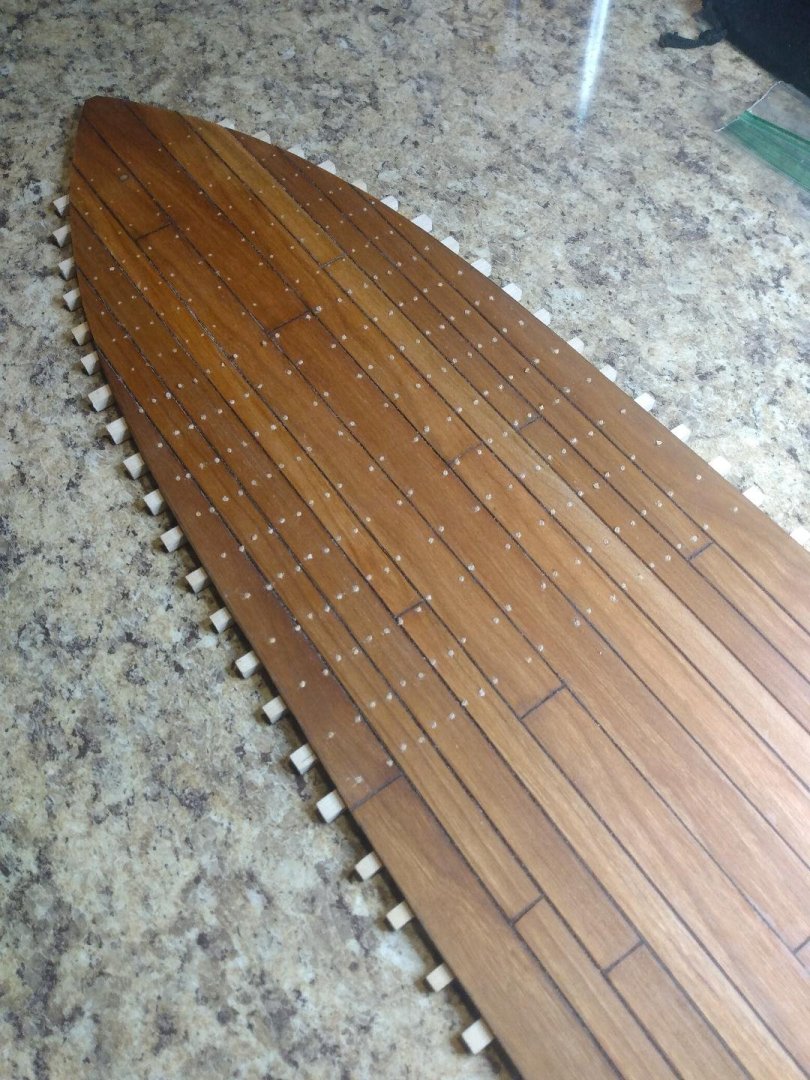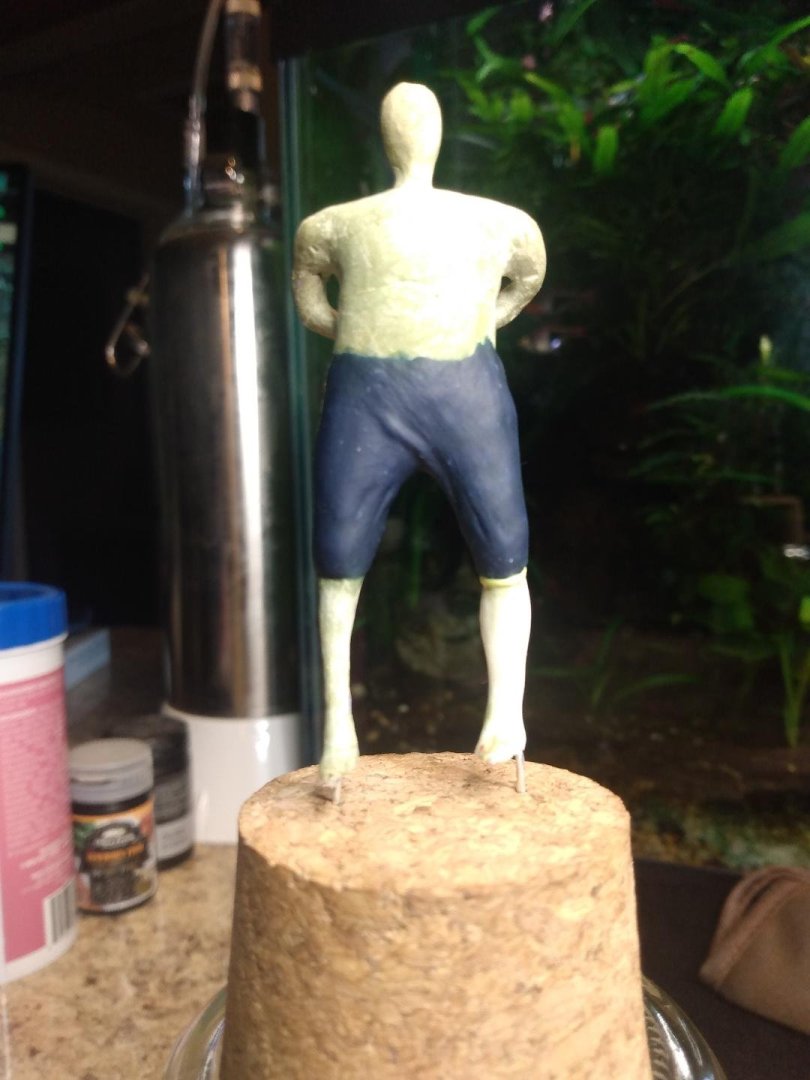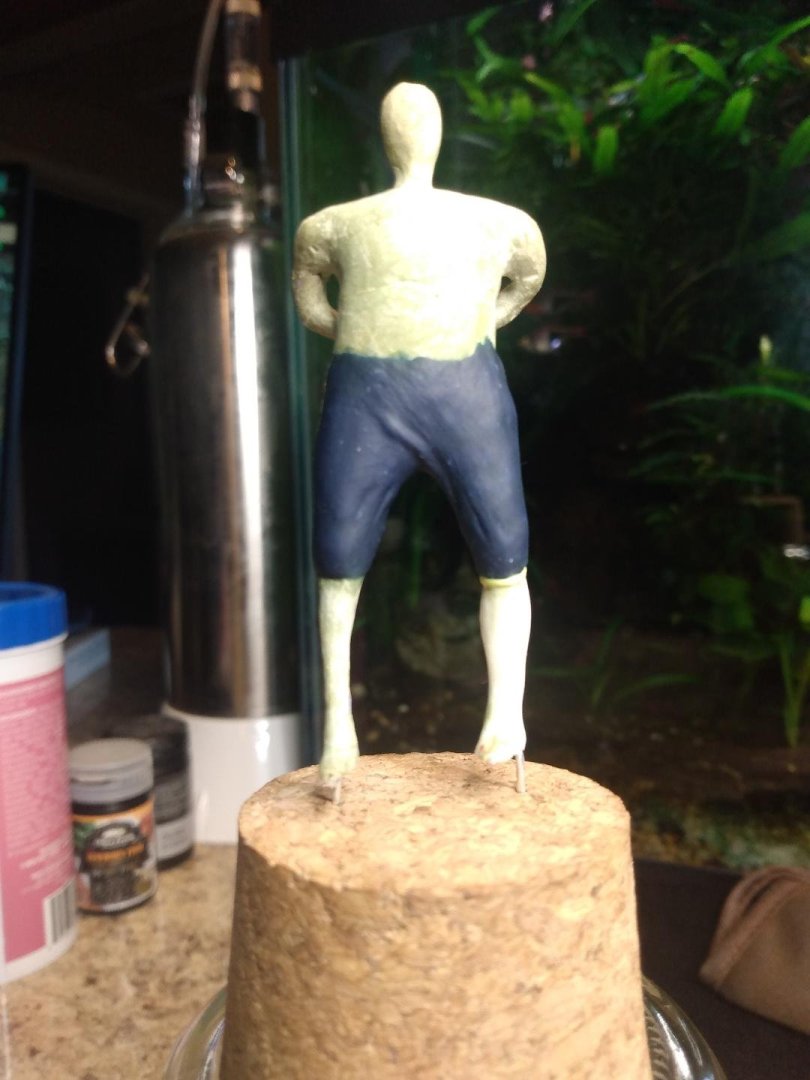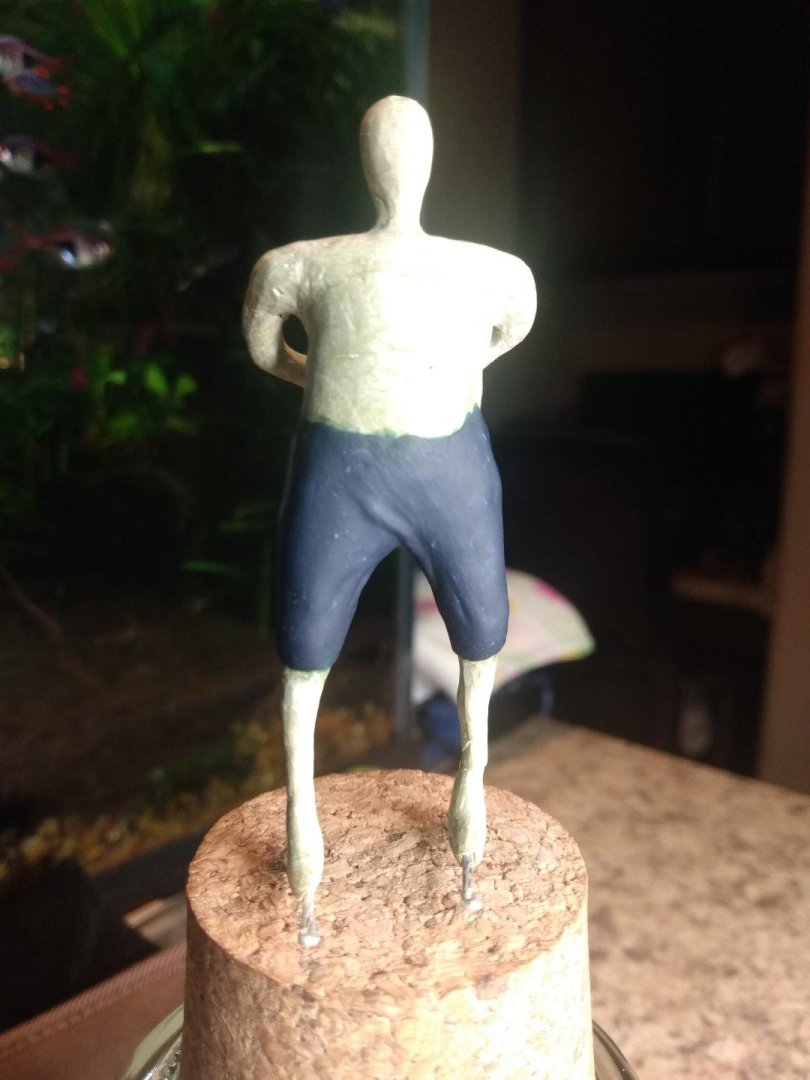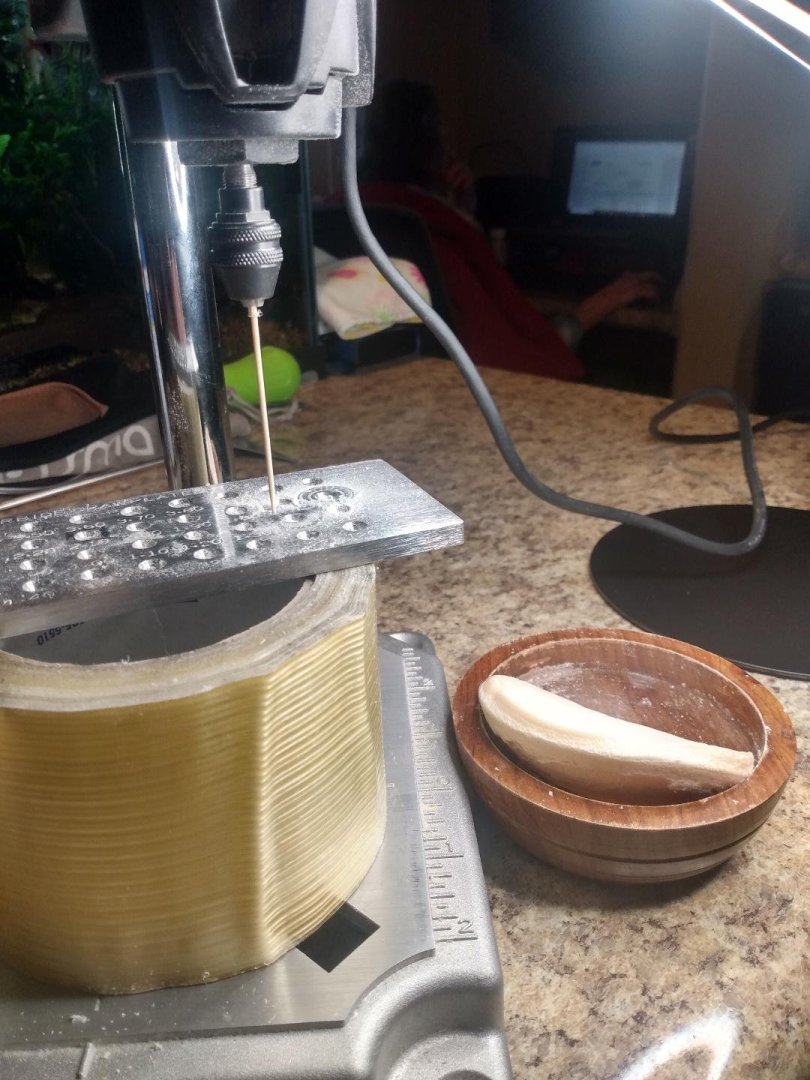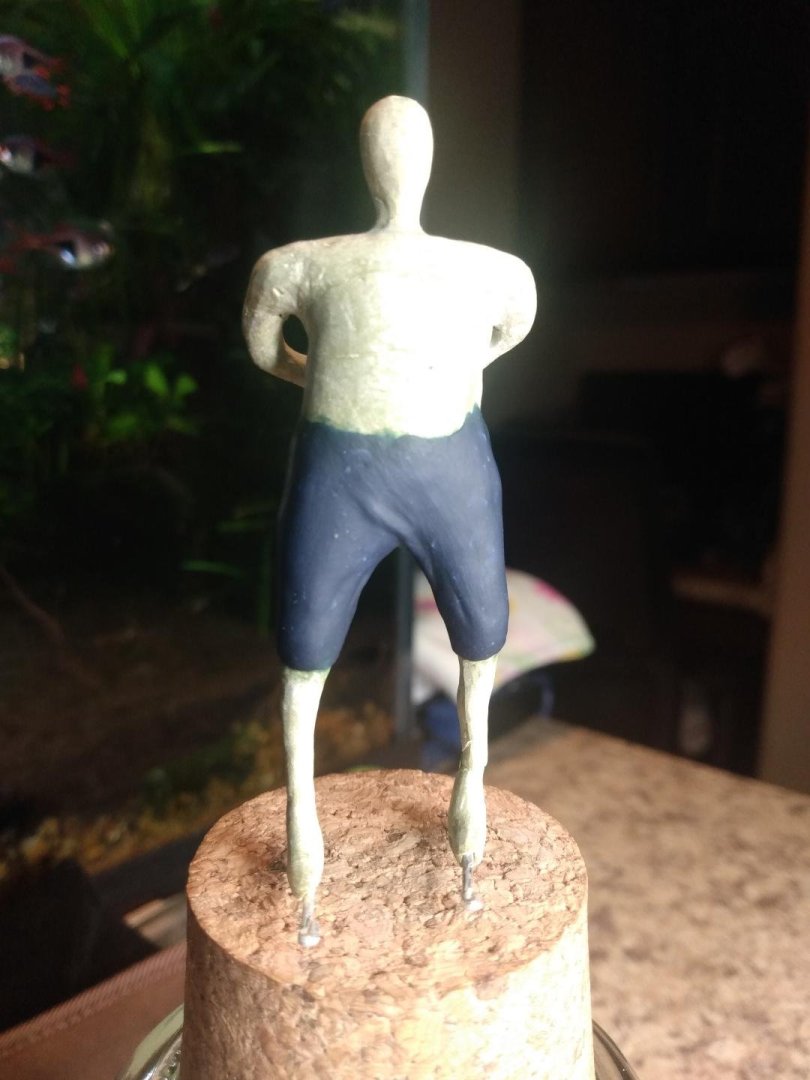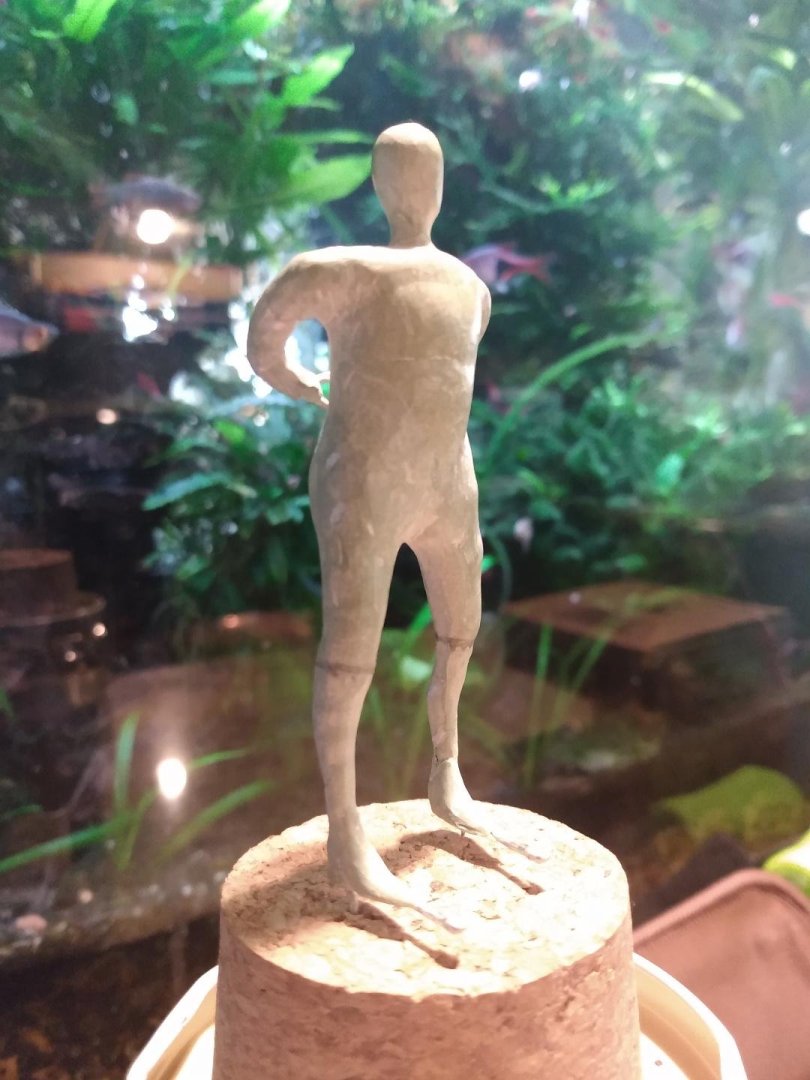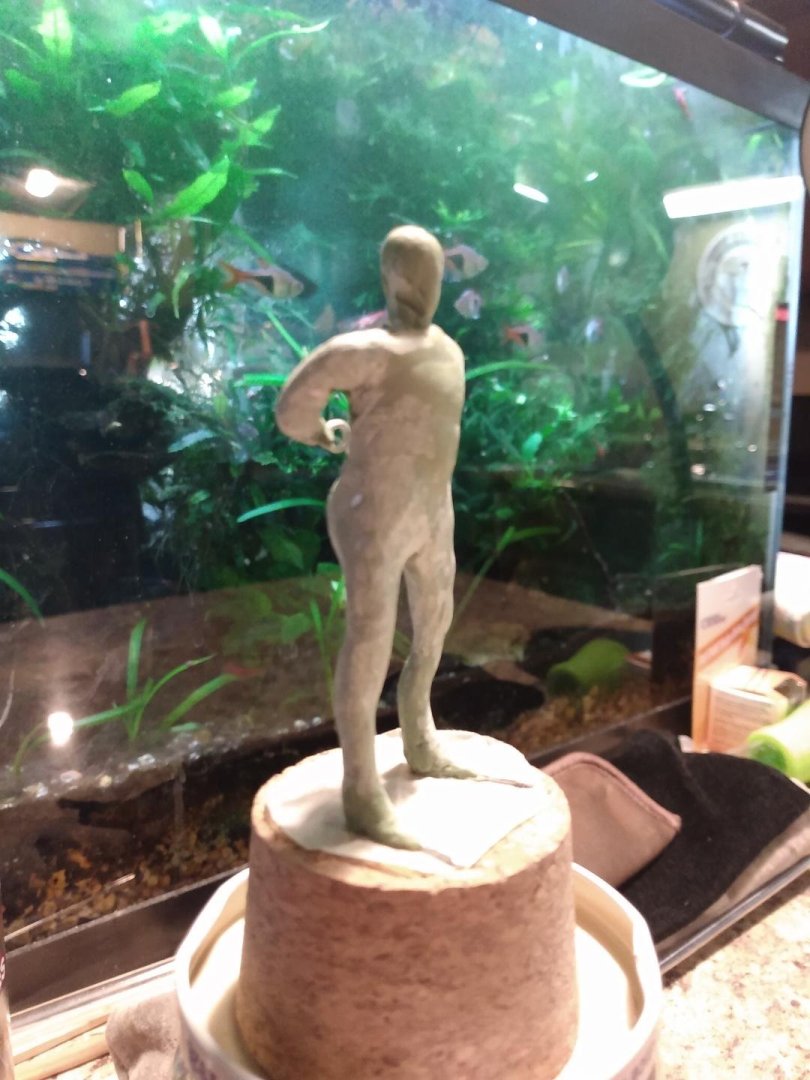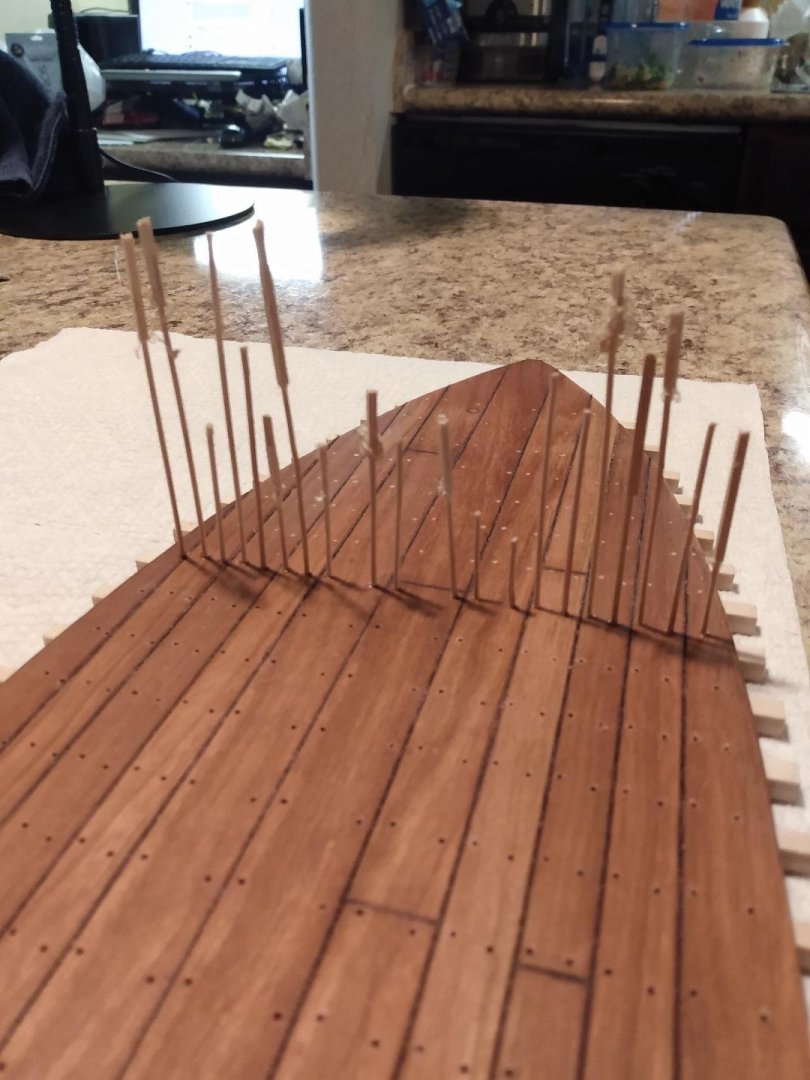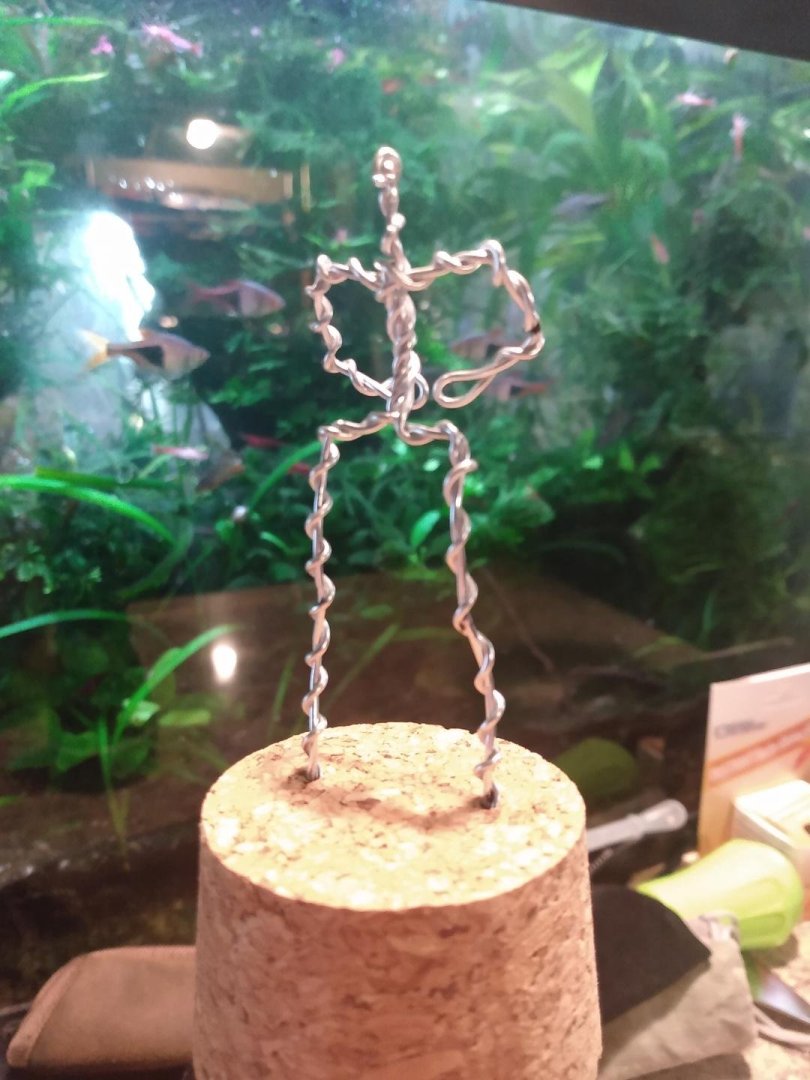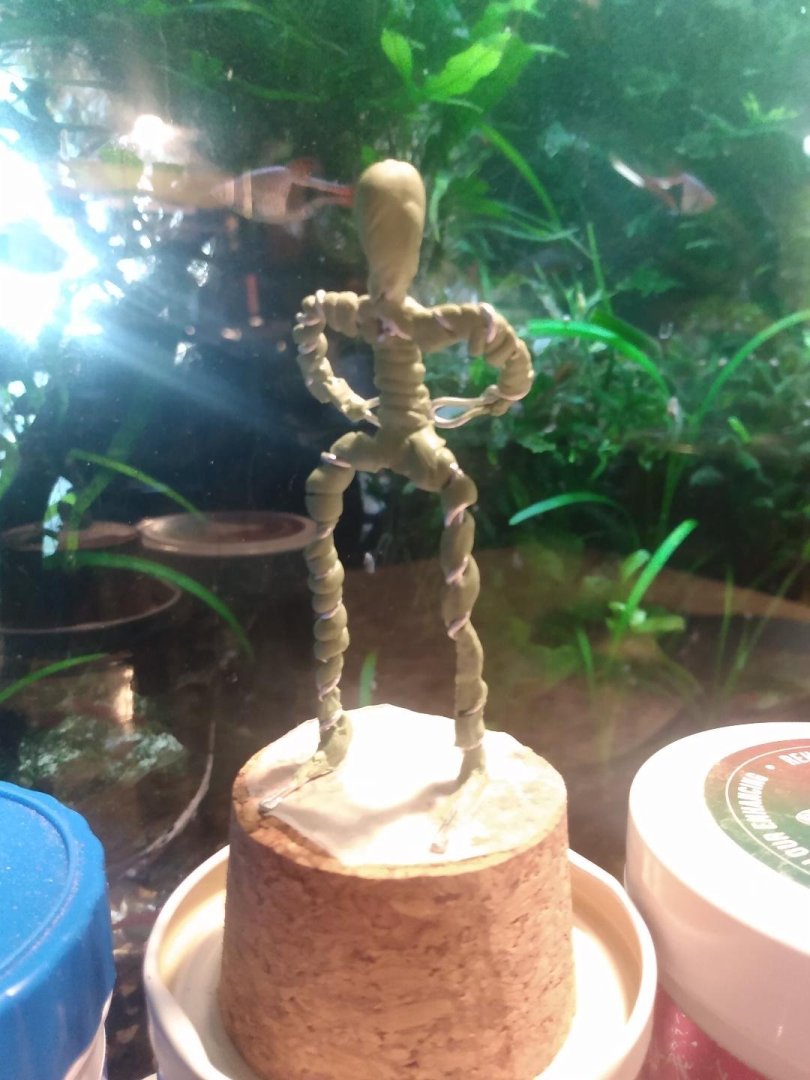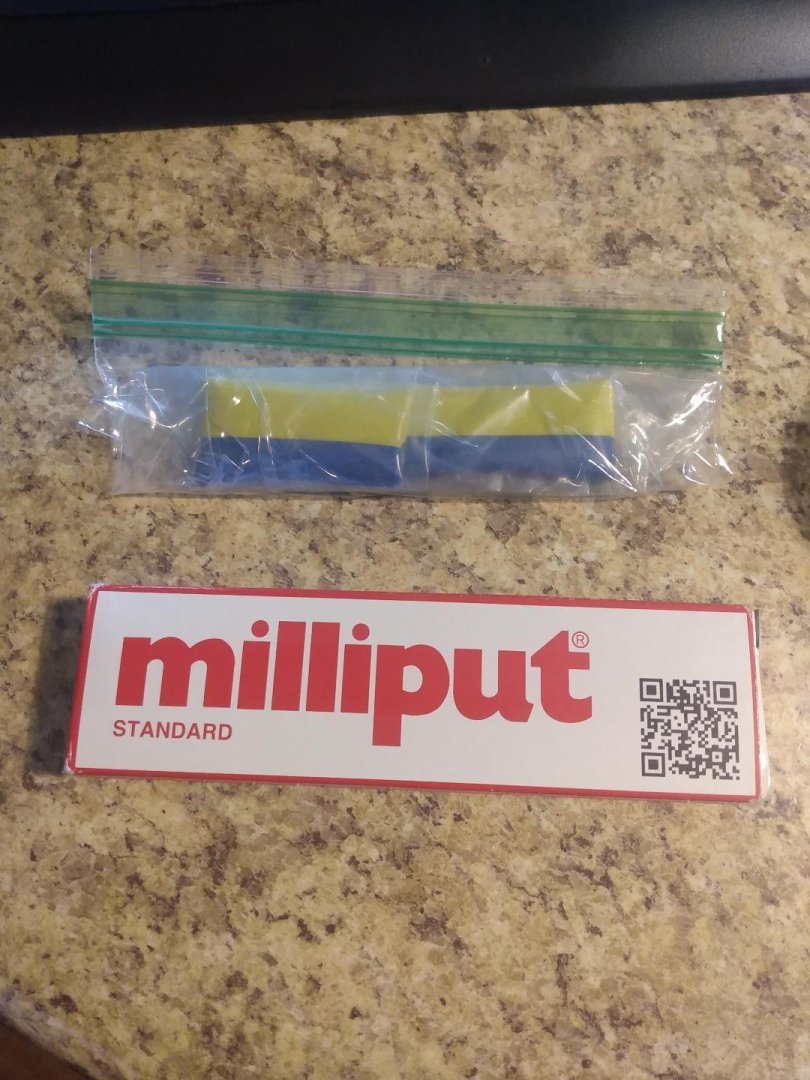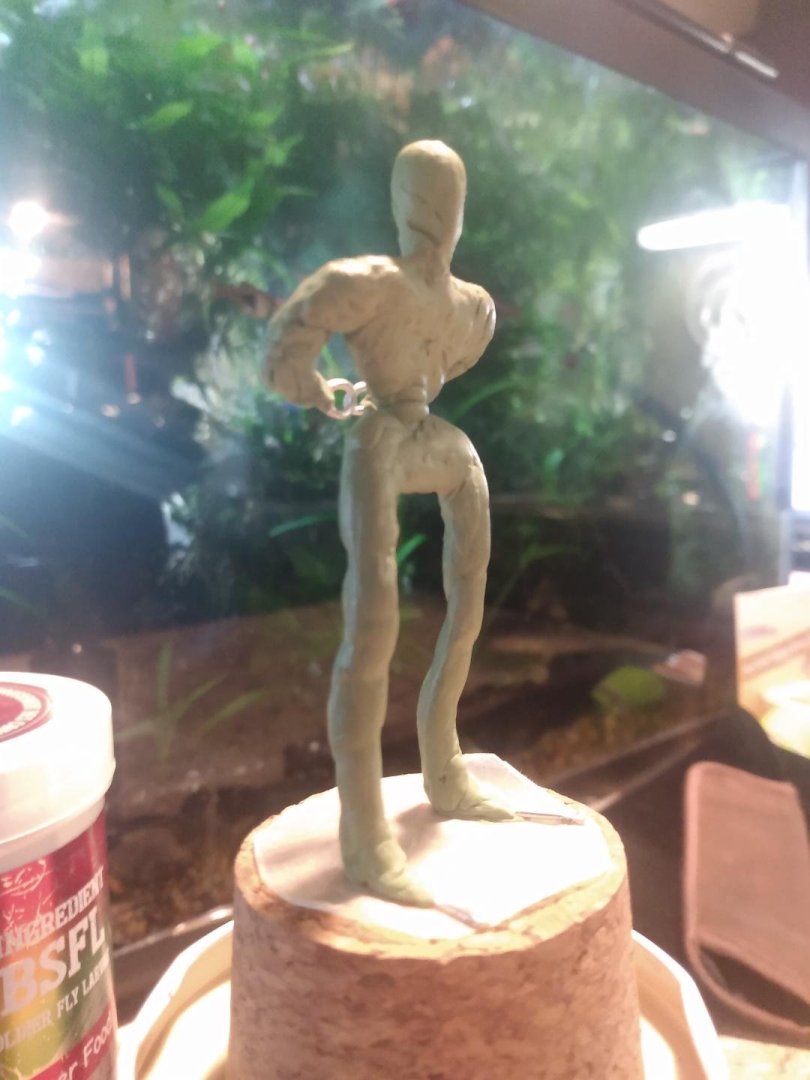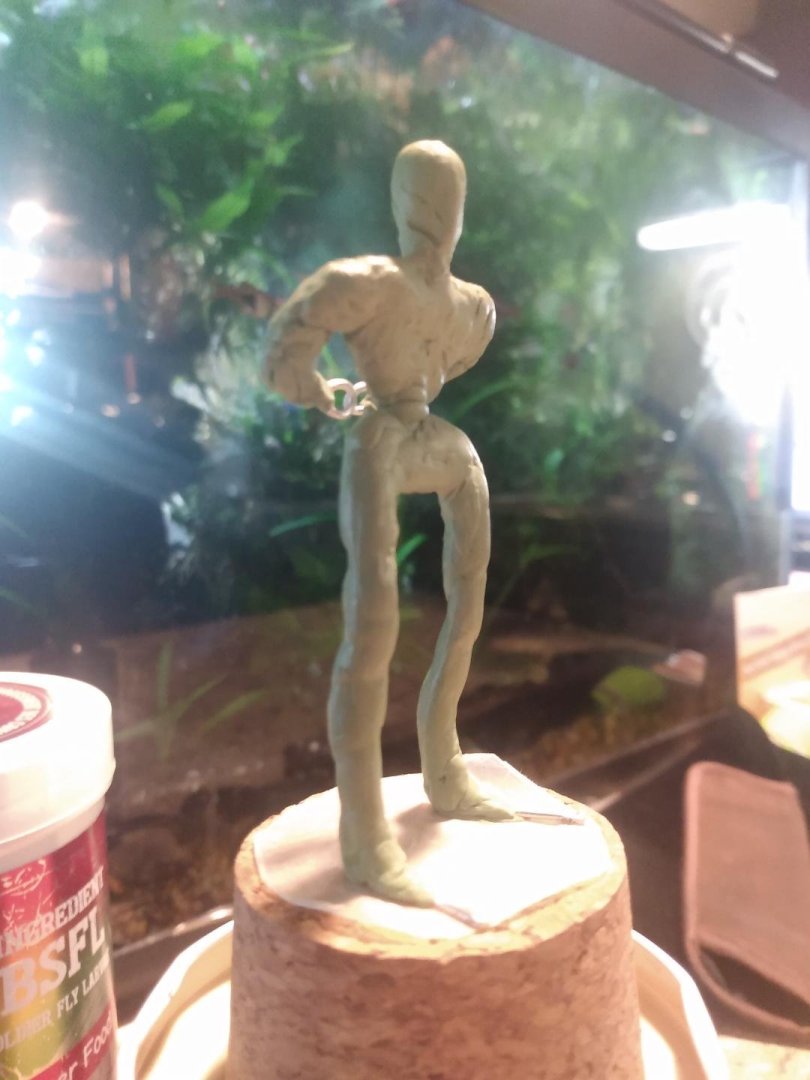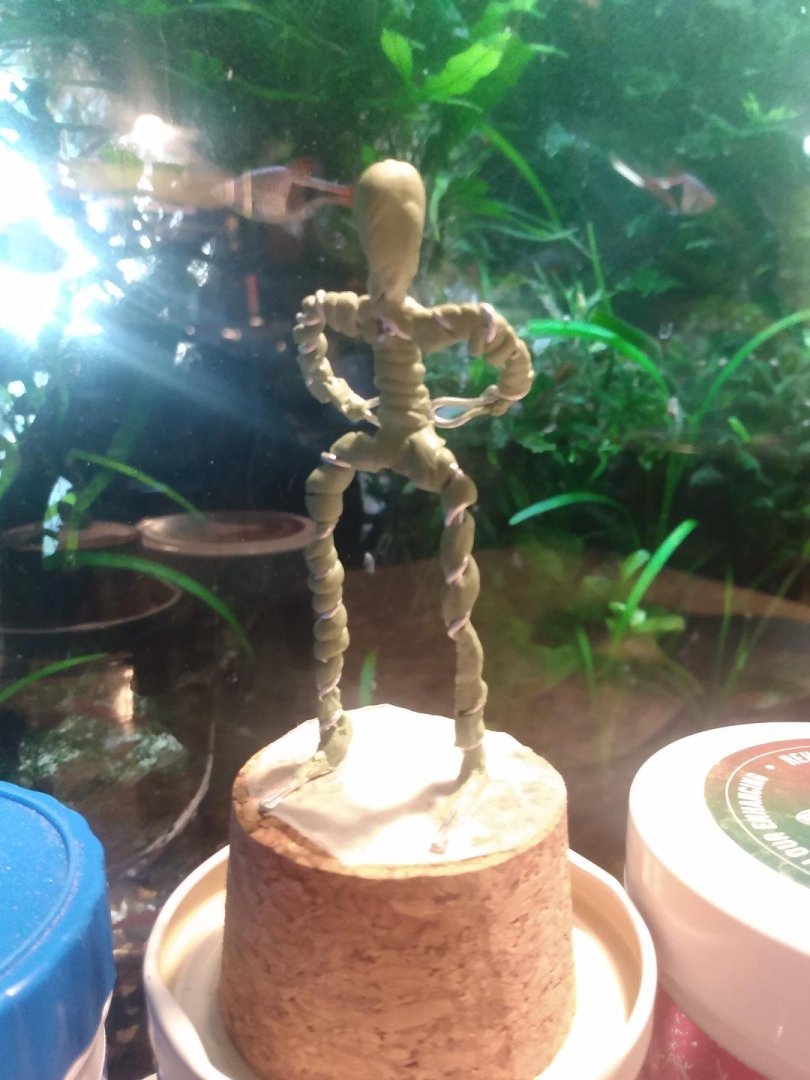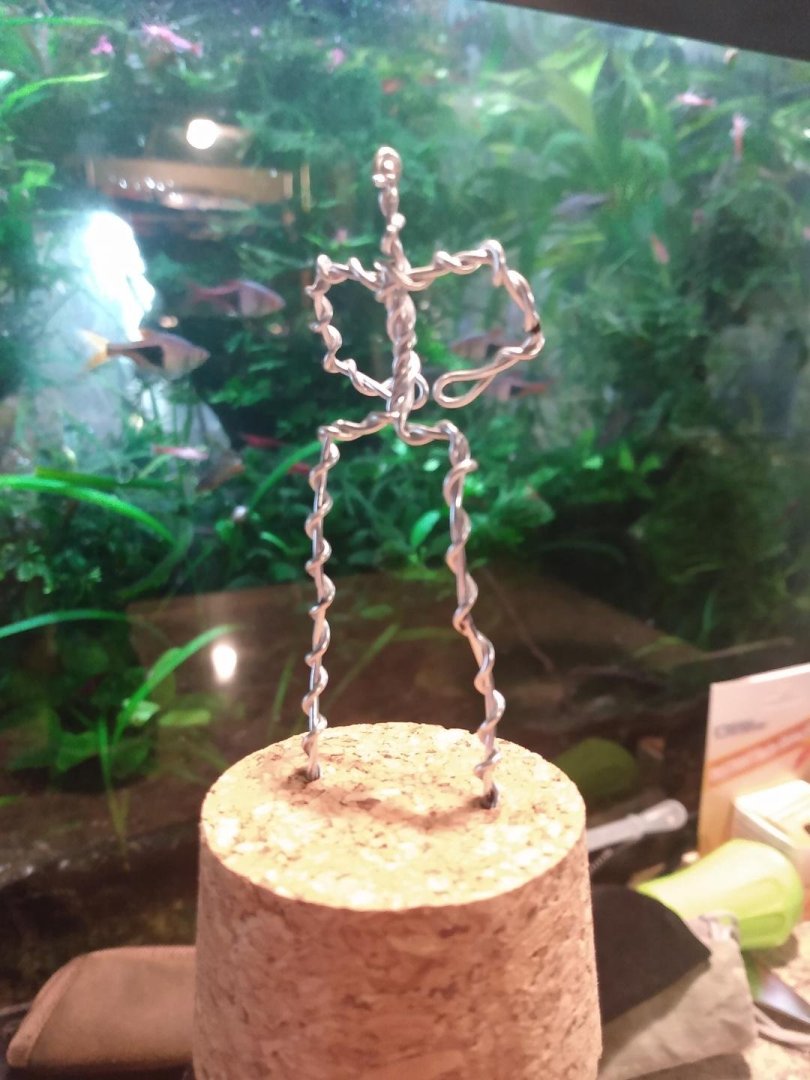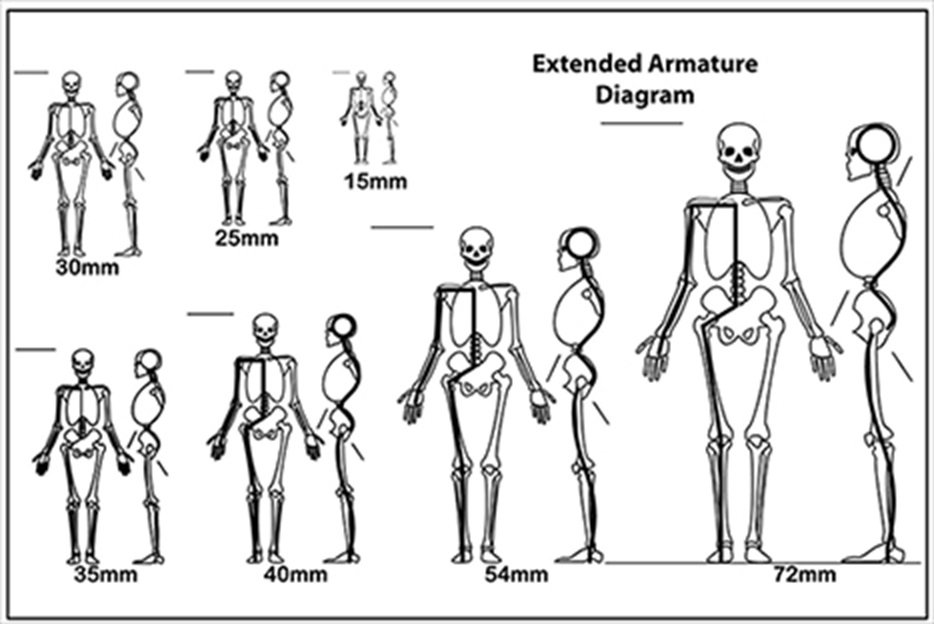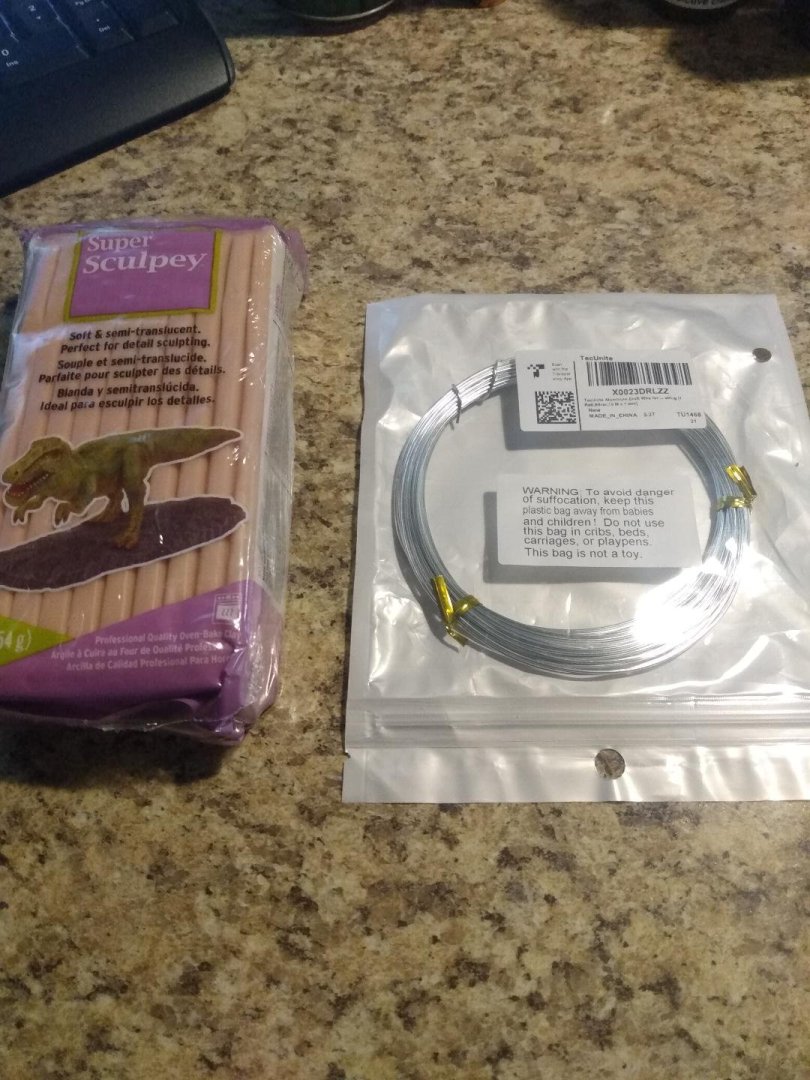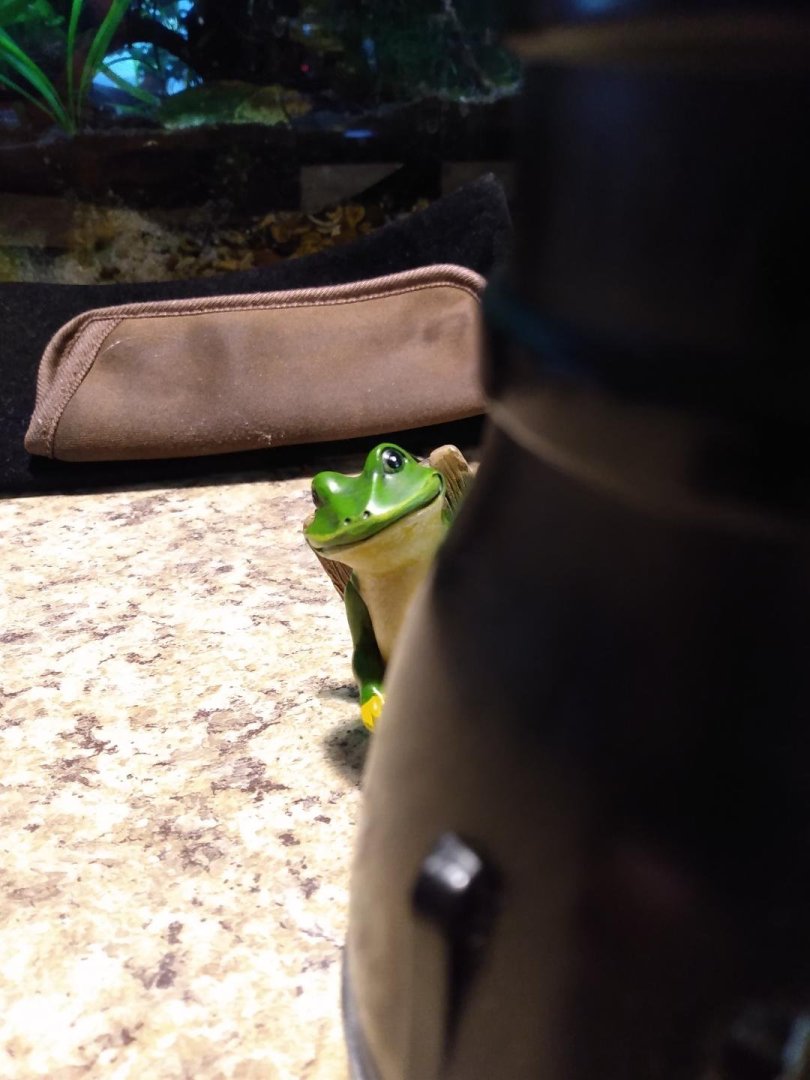-
Posts
737 -
Joined
-
Last visited
Content Type
Profiles
Forums
Gallery
Events
Everything posted by tmj
-

Gunboat Philadelphia 1776 by tmj
tmj replied to tmj's topic in - Build logs for subjects built 1751 - 1800
Still trunnelling and nothing new to share. I'm at about the 50-yard line right now. I wish I had more time for making trunnels and installing them, but I don't. I'm just doing the best I can via the time that I have available. Installing the trunnels is fast. It's making those darned things that take up a lot of time. The NRG should launch a "Trunnel Savings and Loan" where 'investors' build up a reserve of various needed trunnel materials... and people like me can become a member and borrow readymade trunnelling materials, when desired, then pay that material back via monthly installments of the same trunnel material(s) borrowed, 'trunnel interest included', in order to keep the trunnel stock reserve afloat and growing! Maybe even offer 'Trunnel Stock' where shares can be purchased at 'X' amount of material inches per share of stock and dividends paid out in free future trunnel materials. 😏 Mind you... I haven't thought this out thoroughly. I just came up with this brilliant idea after drinking a pint of 4.7% ABV Pale Ale. Let me toss another pint or few down my neck and I'll 'surely have the perfect plan' concocted! -
This is a very worthy thing that you are doing! I look forward to watching your progress, as it's made, while you move forward and work towards finally fulfilling the memorable desires of Carson and his family! I've reserved a front row seat and intend to stay for the entire show! "God's speed to you and best wishes to all!"
- 301 replies
-
- Constitution
- Bluejacket Shipcrafters
-
(and 1 more)
Tagged with:
-

Gunboat Philadelphia 1776 by tmj
tmj replied to tmj's topic in - Build logs for subjects built 1751 - 1800
I'm pretty sure that I've watched all of his mini-sculpting videos, some of them multiple times. Very helpful indeed, however. He also makes it look way too easy! -

Gunboat Philadelphia 1776 by tmj
tmj replied to tmj's topic in - Build logs for subjects built 1751 - 1800
No trunnels today. I took a break from that. I gave Captain Rue a leg, a stocking and a 'garter' (I guess that's what you call that thing at the bottom of his britches...?). Not to worry. He won't be Pidgeon toed after he gets his shoes. ... Now, I need to get started on a 'Pot-Roast' for Sunday supper. -

Gunboat Philadelphia 1776 by tmj
tmj replied to tmj's topic in - Build logs for subjects built 1751 - 1800
I was starting to have a lot of problems with 'breakage' while running my trunnel materials through the draw plate. I'm sure that it was due to me just getting in a hurry when I should have been taking my time. I started rubbing dry soap onto the material after going through each hole in the drawplate and that worked wonders! I still needed to slow down a bit, but there is much less breakage now. I'll be glad when I'm through with 'this' session of making trunnels to attach the bottom planking to the flooring timbers. I find installing the trunnels to be fun and relaxing. It's making the trunnels that I don't care too much for. Using different types of wood for the trunnels seen on the bottom and the trunnels seen from the top of the flooring timbers, for visual effect, has doubled the number of required trunnels that would normally be needed. That's okay. The results will be worth it in the end. Captain Rue finally put his pants on and came out to help. I mixed Black and 'Ultramarine Blue' Sculpey polymer clay together to get the proper color for the pants. About 75% Blue and 25% Black. Before baking, the mixture looked a bit too Blue... but 'after' baking the end color shifted towards the Black end of the spectrum and now looks just about right to me. I'll add more subtle wrinkles and realism to his pants after I get the lower legs/stockings sculpted and baked. I can't do all of the clay work at one time. It's too delicate. I need to do one thing and then bake the clay before doing anything else to prevent damaging surrounding soft clay(s). Back to making more trunnels again!... -

Gunboat Philadelphia 1776 by tmj
tmj replied to tmj's topic in - Build logs for subjects built 1751 - 1800
Not a lot to report. Still switching between trunnels and working on Captain Rue. Cpt Rue is coming along much faster than the trunnels. I only have 'ONE' of 'him' to deal with! Captain Rue is now ready for some clothes. All of the remaining anatomical irregularities, of his basic form, at this stage, will be fixed once he is fully dressed. The basic form that you currently see is made of epoxy putty and is hard as a rock. His clothes will be made from very thin colored polymer clay (no painting) and sculpted over this form to present a more realistic looking body form with fewer discrepancies. I'll be starting with his britches. This will set the size of his thighs. I'll then add/sculpt his white stockings to properly match the size of his thighs. Then comes the ankles and shoes to properly match the size of the legs... followed by his vest and jacket. Once his body is fully clothed, I'll then have a good reference as to how large his finished head/face and his hands should be. His hat will be the last thing I make. Never doing anything like this before, I'm really surprised at how well this is coming along, and how easy it actually is. Fingers are crossed that the rest of Captain Rue goes as well as it has been going so far... -

Gunboat Philadelphia 1776 by tmj
tmj replied to tmj's topic in - Build logs for subjects built 1751 - 1800
Upper torso is almost ready for some clothes. Still need to work on all the other body parts. Captain Rue is not only going to be tall but also well fed! -

Gunboat Philadelphia 1776 by tmj
tmj replied to tmj's topic in - Build logs for subjects built 1751 - 1800
Still adding trunnels. I'll be doing this for a while... still have a long way to go. My trunnels are a very tight fit into the hole. After making the trunnels I have to taper the ends of the trunnels with sandpaper, dip them in glue and then 'force' the trunnel into the hole taking care to not break the long length of material, which still happens. Once I have all of my trunnel material shoved into holes, I cut the trunnels with flush cut wire cutters and repeat the process until all of my trunnels are once again plugging holes. I don't have to wait for the glue to dry before cutting the trunnels. They are in their holes so tight there is no chance of them falling out with uncured glue. It's a slow and tedious process. I work on trunnels until I'm tired of them, then go find something else to do. Speaking of such. Captain Rue now needs some more attention!..... -

Gunboat Philadelphia 1776 by tmj
tmj replied to tmj's topic in - Build logs for subjects built 1751 - 1800
"Perfect!" Thanks Keith! I like the grappling hook too! 🙂 -
Thanks. I've actually impressed myself, however. It's only going to become more challenging from this point forward. My fingers are crossed! If you are interested in how I made the armature out of one piece of wire, hop over to my Gunboat Philadelphia build log. I linked a YouTube video of how this is done. Your figures are quite small compared to mine (3" tall). "That is extremely impressive!" How tall are they? It might be difficult for you to construct one-wire armatures that small, but maybe not if you use wire 1/2 the diameter that you used on the figures in the photo. Have a look at the video link in my build log (last page of the log). That one-wire method will either work for you, or it won't. You'll have to be the judge of 'that'.
-
Okay, I'm off to the races. I'm going to try to sculp Continental Captain Benjamin Rue, 1776 in 1:24 scale. He will be posed with his arms behind his back in the 'Parade Rest' position. I don't know how tall he was in real life, so I'm taking artistic license and making him 6' tall. This is my wire armature. I used 1mm diameter aluminum wire. No glue, no soldering, no twisted joints... this entire armature was made from 1 single length of uninterrupted wire! The base layer of material added to the wire armature is a 50/50 combination of 'Green-Stuff' and Milliput putties. I mixed the different putties as directed, then mixed them together. I roughed up the wire armature for better adhesion, but that didn't work too well. It was still a bit of a hassle to get that first layer of putty to stick, but patience prevailed. After letting the putty cure over night, I started to bulk things up just a bit, still using the 50/50 Green-Stuff and Milliput. It's now curing again. To be continued...
-

Gunboat Philadelphia 1776 by tmj
tmj replied to tmj's topic in - Build logs for subjects built 1751 - 1800
-

Gunboat Philadelphia 1776 by tmj
tmj replied to tmj's topic in - Build logs for subjects built 1751 - 1800
Base layer has been applied to the wire armature. Captain Rue now needs to cure over night before I can start bulking up the base layer and start adding shape. I don't know how tall Captain Rue was in real life, but his clay counterpart will represent a 6' tall man at 1:24 scale. Now it's back to the ol' trunnels. 🫤 -

Gunboat Philadelphia 1776 by tmj
tmj replied to tmj's topic in - Build logs for subjects built 1751 - 1800
Is he wearing stockings, or bare legged? What do his shoes look like? There 'ARE' some important details missing that a mirror will never show... -

Gunboat Philadelphia 1776 by tmj
tmj replied to tmj's topic in - Build logs for subjects built 1751 - 1800
Meet Captain Benjamin Rue. Pardon his wiry appearance. He was conducting important military business, at the pub, into the wee hours of the morning. As he slowly 'gets himself together', he will be popping in, on occasion, to check on the progress of this gondola build while also seeking worthy crewmen to man the vessel once completed. -
Not sure about the wire just yet. I have some 1mm aluminum wire and also some 1.5mm steel wire to work with. I'm thinking that I'll go with the thicker steel wire for much more rigidity without doubling it up, twisting etc. I'll either solder, or TIG weld the shoulders and the hips to the spine for a solid connection. This is something totally new to me. I'll do what I need to do to put a good armature together, however. The true test will come when it's time to start adding putty, clay and details. Fingers are crossed. I've also been studying videos of sculpting miniatures on YouTube, concerning how to build an accurate armature with proper proportions. The image below is an example of how I will begin with a 1:24 scale figure. I downloaded an armature chart and resized it, in Cad, to reflect the actual size(s) of 3 different 1:24 scale armatures that I will need to construct... one figure will be 5'-3" in height, one figure at 5'-6", and one figure at 6'-0" tall. I'll be able to use my scaled CAD drawings as full-sized templates for cutting the wire(s) to proper lengths and also for properly measuring/locating the hips and shoulders along the spine. Pass or fail, this should prove to be a fun attempt at sculping miniatures. If you have any hints, tips, etc. for someone who has never tried this before... "Please chime in!" I'll need all the help I can get! 🙂
-

Gunboat Philadelphia 1776 by tmj
tmj replied to tmj's topic in - Build logs for subjects built 1751 - 1800
How hard could this 'sculping-thing' actually be with a good picture, some wire, and a bit of clay? "Hmm." "Hold on to my beer, Bubba, and 'WATCH THIS'!" With the help of this video, I might be able to make some decent wire armatures. It's the clay 'sculpting' part that has me worried. What the heck. "Nothing ventured, nothing gained!" I have a long way to go on this build, so I have time to tinker with this sculping thing along the way... -

Gunboat Philadelphia 1776 by tmj
tmj replied to tmj's topic in - Build logs for subjects built 1751 - 1800
Thanks Keith. I already have that one. If only the Lt. would get his left arm and hat out of the way so I could see more of the seaman! 🤨 This is the kind of stuff that I keep running in to. The officers are always shown well... but the ordinary seamen 'not so much'. -

Gunboat Philadelphia 1776 by tmj
tmj replied to tmj's topic in - Build logs for subjects built 1751 - 1800
I posted this elsewhere, and I'm posting it here too. More exposure and hopefully more responses as well. After all is finally said and done, I don't want my gunboat to appear as an abandoned 'Ghost-Ship'. I'd like to have two or three scale figures aboard my gunboat to give my build a more lifelike appearance. Problem is, I cannot find any 1:24 scale figures for sale that would be period correct for a Continental Gunboat built in 1776. Plenty of British pieces found, but not American. I'll need to try and make my own. Fingers are crossed as to the outcome. I've purchased some polymer clay and wire. The only thing missing is a few period correct drawings, images, etc. of some 'Ordinary Seaman' types of crew members. 1776 Continental Officers and their uniforms are easy to find. I don't need officers. I need to know what the lower ranking Continental sailors dressed like in 1776. If anyone has any images or links to share, I'd be grateful! -
This thread has piqued my curiosity in possibly trying my hand at sculpting some 1:24 scale miniatures. I'm building a 1:24 scale Gunboat Philadelphia and would rather it 'not' look like an abandoned ghost ship when completed. I'd like to have two or three scale figures aboard to give my build a more lifelike appearance. Problem is, I cannot find any 1:24 scale figures for sale that would be period correct for a Continental Gunboat built in 1776. Plenty of British pieces found, but not American. I'll need to try and make my own. Fingers are crossed as to the outcome. I've purchased some polymer clay and wire. The only thing missing is a few period correct drawings, images, etc. of some 'Ordinary Seaman' types of crew members. 1776 Continental Officers and their uniforms are easy to find. I don't need officers. I need to know what the lower ranking Continental sailors dressed like in 1776. If anyone has any images or links to share, I'd be grateful!
-

Gunboat Philadelphia 1776 by tmj
tmj replied to tmj's topic in - Build logs for subjects built 1751 - 1800
About us
Modelshipworld - Advancing Ship Modeling through Research
SSL Secured
Your security is important for us so this Website is SSL-Secured
NRG Mailing Address
Nautical Research Guild
237 South Lincoln Street
Westmont IL, 60559-1917
Model Ship World ® and the MSW logo are Registered Trademarks, and belong to the Nautical Research Guild (United States Patent and Trademark Office: No. 6,929,264 & No. 6,929,274, registered Dec. 20, 2022)
Helpful Links
About the NRG
If you enjoy building ship models that are historically accurate as well as beautiful, then The Nautical Research Guild (NRG) is just right for you.
The Guild is a non-profit educational organization whose mission is to “Advance Ship Modeling Through Research”. We provide support to our members in their efforts to raise the quality of their model ships.
The Nautical Research Guild has published our world-renowned quarterly magazine, The Nautical Research Journal, since 1955. The pages of the Journal are full of articles by accomplished ship modelers who show you how they create those exquisite details on their models, and by maritime historians who show you the correct details to build. The Journal is available in both print and digital editions. Go to the NRG web site (www.thenrg.org) to download a complimentary digital copy of the Journal. The NRG also publishes plan sets, books and compilations of back issues of the Journal and the former Ships in Scale and Model Ship Builder magazines.


